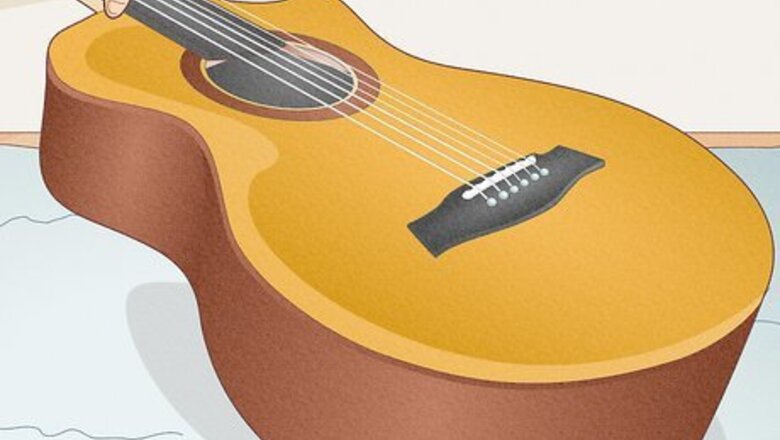
views
Removing the Fretboard
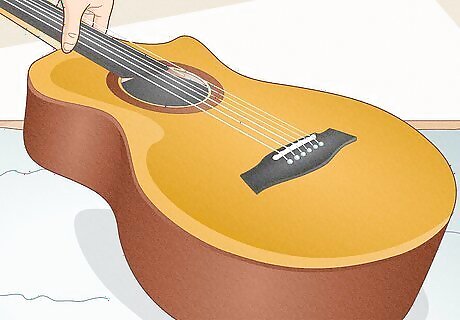
Lay the instrument on a flat, stable surface. A workbench or table will work, as long as it’s flat and doesn’t wobble around. First, put down a sheet or drop cloth, because this is a messy job. Then lay the instrument down face-up. If you have a neck rest for the instrument, place it under the neck just below the head. This will make it easier to work on. If you’re not in a work area, you should also spread some drop cloth around the table to catch glue and sawdust.
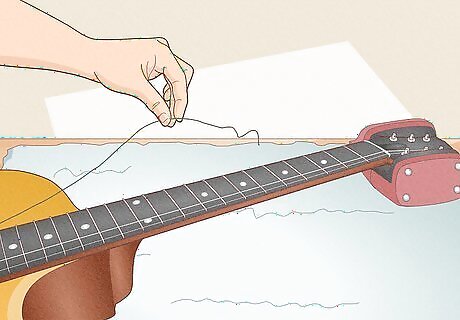
Take the strings off the instrument. No matter what type of instrument you’re working on, the strings will get in the way while you’re working. Loosen each tuning peg until the strings come loose, then pull them out through the instrument bridge. You can put the string aside to put back on later or put on a fresh set of strings when you’re done.
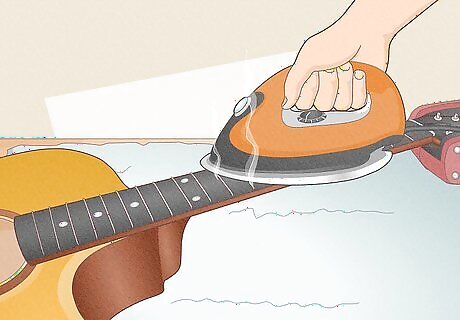
Melt the fretboard glue with an iron starting from the head. You won’t be able to get the fretboard off unless you melt the glue first. Use an iron with no water in it. Put it on a medium setting, press it against the instrument neck, and slowly run it up and down to heat the glue. This should start loosening the bond. There are a few different ways to melt the fretboard glue. You could also use a heat gun by holding it 1–2 in (2.5–5.1 cm) from the neck and waving it up and down a few times to loosen the glue. You could also wrap the neck in an electric blanket and turn the heat all the way up. Leave it there for 5-10 minutes to heat the glue. The fretboard probably won’t get hot enough to burn you, but wear gloves as an extra precaution.
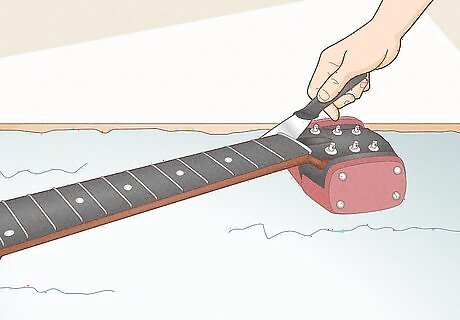
Slip a flat putty knife underneath the fretboard. Start at the instrument head and insert the knife between the fretboard and neck. Rock the knife back and forth to get it in as far as you can. Then pry up slightly to raise the fretboard in that spot. If you can’t get the knife under the fretboard, leave the iron on the spot for a few more minutes. Keep your fingers away from the knife. If you slip, you could get a nasty cut.
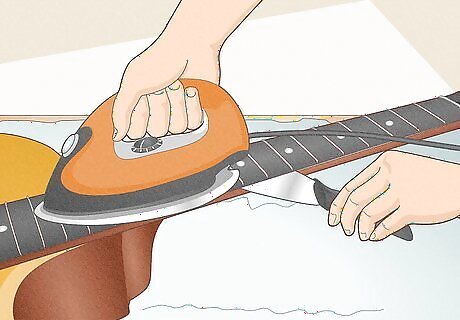
Work down the neck with the knife and iron to pry the fretboard up. Leave the iron on the next spot below the section you just pried up to loosen the glue. Then insert the putty knife and pry up this spot. Continue working your way down the neck to loosen the entire fretboard. All fretboards are different, and some might come up more easily than others. This could take a little while, so be patient and keep working. If the glue in spots you already lift starts hardening again, insert some thin wood strips between the fretboard and neck to keep them separate. If the fretboard won't come up, do not force it! You could crack the wood and need to get a whole new fretboard. Keep applying heat and working the putty knife carefully to work the fretboard up easily.
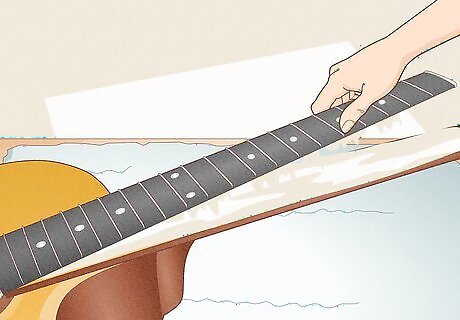
Pull the fretboard off when it comes loose. When you’ve worked all the way down to the instrument body, the fretboard should come off easily. Pull it up to take it off. Put the fretboard in a safe spot while you work. You’ll need to put it back on when you’re done with the truss rod.
Cleaning the Neck
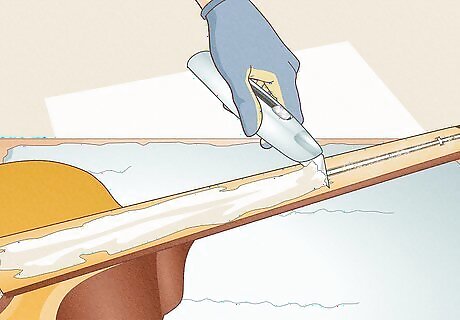
Scrape away any glue holding the old truss rod in. Different manufacturers secure their truss rods differently. Some just rest it in the neck channel, and some actually glue it in. If the rod is glued in, use a razor blade or utility knife and scrape it off. This should free the rod. Wear gloves while you’re working so you don’t get cut. If the rod is glued in and won’t come out, use the iron or heating gun again to loosen it up. Don’t worry about damaging or scratching the old truss rod. It’s probably broken and you don’t need it anymore.
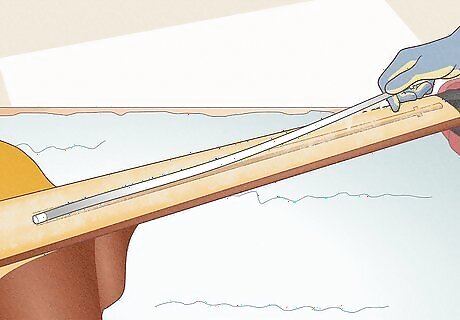
Remove the old truss rod. Grab the rod at either side and pull it up. It should come out easily as long as you removed all the glue. If the rod wasn’t glued in, it’ll just be resting in the slot. In this case, it’ll lift up even easier.
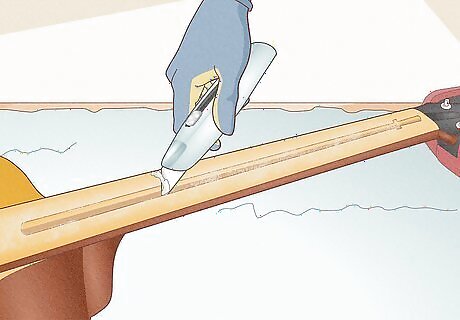
Clean any glue out of the truss rod channel. If there is leftover glue in the channel, scrape it off with a razor or knife. Then sand the channel with medium-grit sandpaper to smooth it down. If the rod wasn’t glued in, the channel is probably pretty clean. Still give it a sanding to get rid of any rough spots. Medium sandpaper is between 100- and 150-grit.
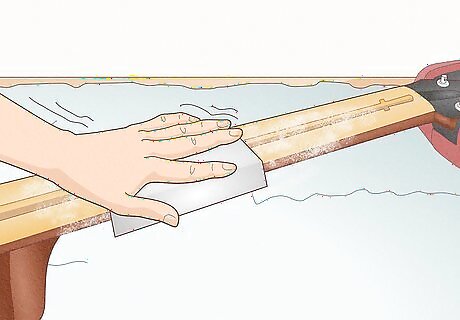
Sand the old glue off of the neck. The new glue won’t stick well if there is leftover glue. Use medium-grit sandpaper again and sand in a back-and-forth motion along the neck. Continue until the whole neck is smooth. If you’re using the same fretboard, then sand the bottom of that too. If you got a new fretboard, then you don’t have to sand it.
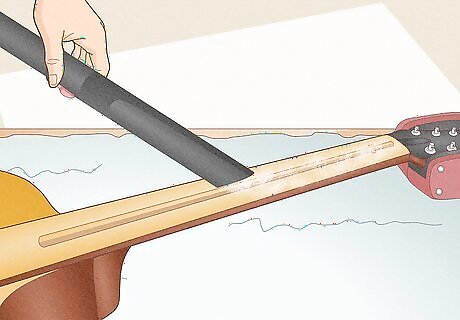
Vacuum the neck to remove any sawdust. The sanding and scraping will make a lot of sawdust. Use a shop vac and get rid of any dust, dirt, glue, or wood particles on the guitar neck. Pay careful attention to the truss rod channel. It’s easy for dust and debris to hide in there. If there is any dust leftover, wipe the neck and channel with a tack cloth or slightly damp rag.
Installing the Rod and Fretboard
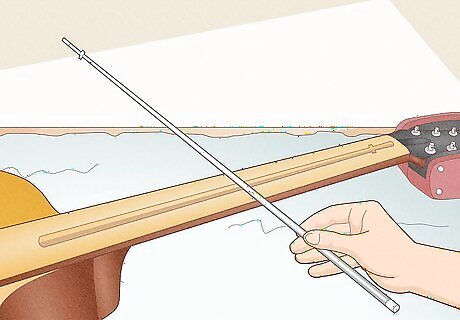
Get a truss rod designed for your instrument. There are all kinds of truss rods available, and different instruments use particular kinds. Get a replacement that matches the type your instrument uses so you know it’ll fit right. When you know what you’re looking for, you can order new truss rods online or get them from a repair shop. The best thing to do is check your instrument manual or contact the manufacturer to ask about the right truss rod. You could also ask an employee at a repair shop.
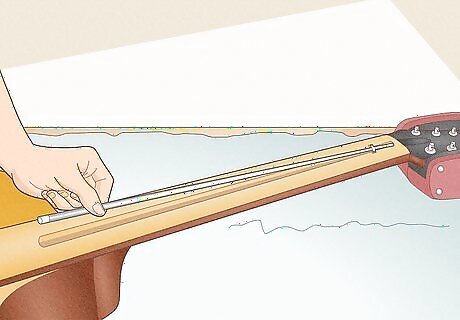
Fit the new truss rod into the channel with the nut facing the neck. Hold the new truss rod so the nut on the end, or the thicker part, is closest to the neck. Press the rod into the neck channel and slide it so it takes up all the space in the channel. In some instruments, the truss rod nut should face the body instead of the neck. This is more common in acoustic guitars. Truss rods are designed to fit the truss rod channel, so it shouldn’t slide back and forth if it’s in properly. If the rod doesn’t fit, you may have gotten the wrong type. Double-check the kind that your instrument uses.
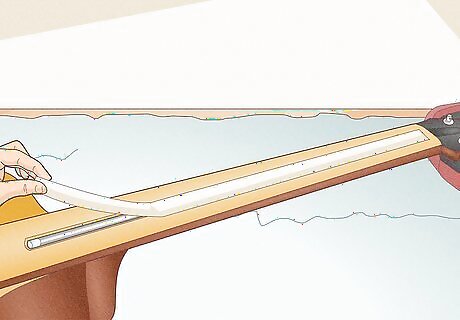
Cover the rod with a strip of masking tape to protect it from the glue. Use a thin strip of masking tape and cover up the whole channel. This keeps the truss rod in place and protects if from the glue. While some manufacturers glue their truss rods in, this isn’t a good idea for you. It’ll be much harder to fix if you make a mistake.
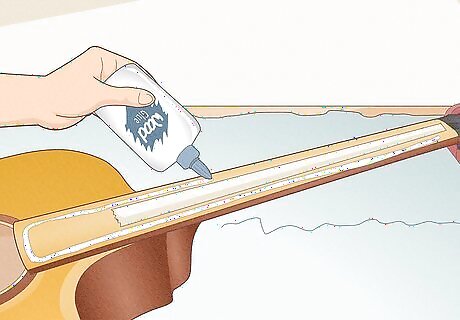
Run a strip of wood glue around the perimeter of the guitar neck. Start on either side of the neck and squeeze out a thin line of wood glue. Work your way around the whole border so there’s an even line surrounding the truss rod channel. Normal wood glue works fine for instruments, but you could also get specialized glue designed for your instrument. If you squeeze out too much in any spots, wipe it off. Globs of glue will leak out onto the neck.

Spread the glue out into a thin layer. A plastic card works best for this. Spread the glue around the whole surface so there’s a thin, even layer on the wood. This helps the fretboard stick better. Remove the masking tape when you’re done. Don’t worry about getting any glue on the masking tape. None will get on the truss rod if you covered it.
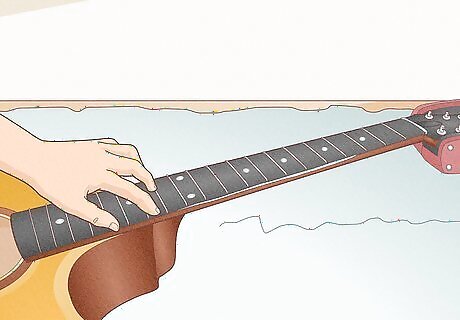
Press the fretboard onto the neck. Angle the fretboard so the wider frets are closest to the instrument neck and the thinner ones are closest to the body. Then press the fretboard down and arrange it so the edges are flush with the neck. Hold it down for a few seconds to let the glue get a hold. Double check and make sure that the fretboard is completely flush with the edges of the neck. If not, the fretboard won’t set properly. If some glue leaks out when you press the fretboard down, leave it for now. It's easier to scrape off after it's dry.
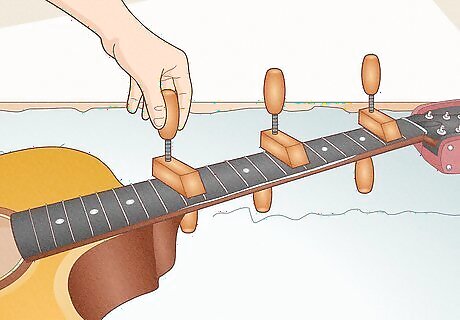
Clamp the fretboard down to let the glue set. Place a wood clamp every 3–6 in (7.6–15.2 cm) along the fretboard. Close the clamps with firm pressure. This keeps the fretboard and neck together while the glue dries. To ensure the fretboard sits with even pressure on it, some pros clamp down a block of wood onto the neck. You don’t need to close the clamps with a lot of pressure. Too much force could damage the neck. Just enough to keep the fretboard in place is fine.

Leave the clamps on for 1 hour so the glue dries. Wood glue usually dries pretty fast. Leave the instrument clamped and don’t disturb it for about an hour. After that time, the glue should be all dry and you can remove the clamps. The drying time might be different for the type of glue you’re using. Follow the instructions provided.
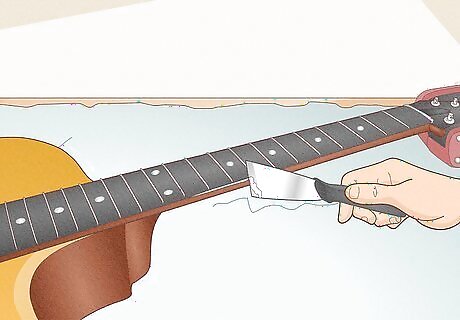
Scrape off any glue spillage around the neck. Pressing the neck and fretboard together could force some glue out and onto the instrument neck. Don’t worry, this is easy to fix. Just use a chisel or putty knife and scrape it off for a nice, clean finish. It’s better to wait until the glue is dry to scrape it off. If you wipe it away while it’s wet, it could leave a mark on the instrument. If the glue leaves any marks or won't come off completely, you can also sand it off with fine-grit sandpaper.




















Comments
0 comment